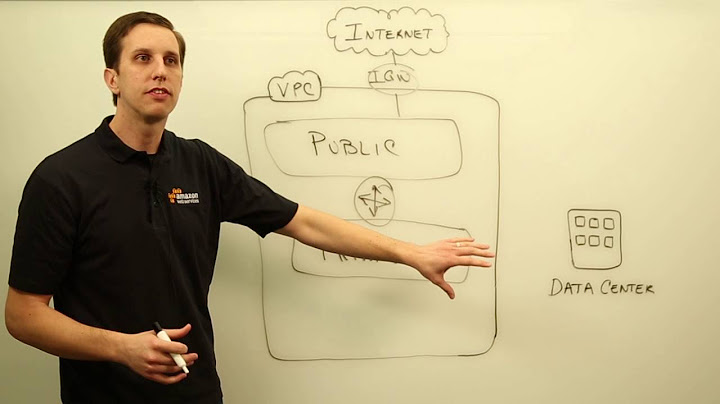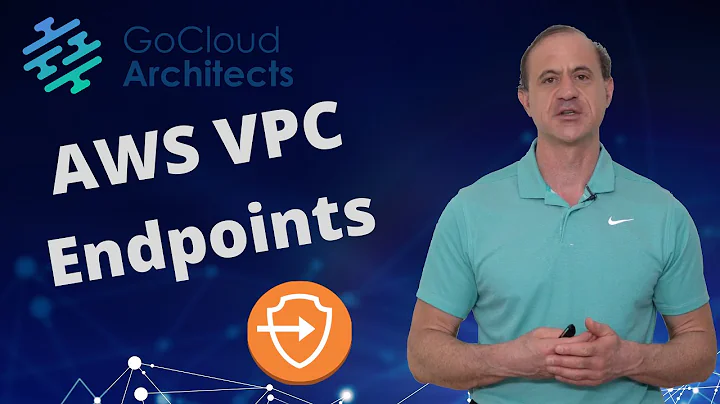Amazon ELB in VPC
Solution 1
My teammate and I just have implemented ELB in a VPC with 2 private subnets in different availability zones. The reason you get timeouts is that for each subnet you add to the load balancer, it gets one external IP address. (try 'dig elb-dns-name-here' and you will see several IP addresses). If one of these IP address maps a private subnet, it will timeout. The IP that maps into your public subnet will work. Because DNS may give you any one of the IP addresses, sometimes it works, sometimes it times out.
After some back and forth with amazon, we discovered that the ELB should only be placed in 'public' subnets, that is subnets that have a route out to the Internet Gateway. We wanted to keep our web servers in our private subnets but allow the ELB to talk to them. To solve this, we had to ensure that we had a corresponding public subnet for each availability zone in which we had private subnets. We then added to the ELB, the public subnets for each availability zone.
At first, this didn't seem to work, but after trying everything, we recreated the ELB and everything worked as it should. I think this is a bug, or the ELB was just in an odd state from so many changes.
Here is more or less what we did:
- WebServer-1 is running in PrivateSubnet-1 in availability zone us-east-1b with security group called web-server.
- WebServer-2 is running in PrivateSubnet-2 in availability zone us-east-1c with security group called web-server.
- Created a public subnet in zone us-east-1b, we'll call it PublicSubnet-1. We ensured that we associated the routing table that includes the route to the Internet Gateway (ig-xxxxx) with this new subnet. (If you used the wizard to create a public/private VPC, this route already exists.)
- Created a public subnet in zone us-east-1c, we'll call it PublicSubnet-2. We ensured that we associated the routing table that includes the route to the Internet Gateway (ig-xxxxx) with this new subnet. (If you used the wizard to create a public/private VPC, this route already exists.)
- Created a new ELB, adding to it PublicSubnet-1 and PublicSubnet-2 (not the PrivateSubnet-X). Also, picked the instances to run in the ELB, in this case WebServer-1 and WebServer-2. Made sure to assign a security group that allows incoming port 80 and 443. Lets call this group elb-group.
- In the web-server group, allow traffic from port 80 and 443 from the elb-group.
I hope that helps!
Solution 2
The key here is understanding, that you are not "Adding subnets/availability zones" to ELB, but rather specifying what subnets to put ELB instances into.
Yes, ELB is a software load balancer and when you create ELB object, a custom loadbalancing EC2 instance is put into the all subnets that you specified. So for the ELB (its instances) to be accessible, they have to be put into the subnets that have default route configured via IGW (most likely you classified these subnets as public).
So as already was answered above, you have to specify "public" networks for ELB, and those networks should be from the AZs where your EC2 instances are running. In this case ELB instances will be able to reach your EC2 instances (as long as security groups are configured correctly)
Solution 3
We've implemented ELB in a private subnet so the statement that all ELB's need to be public isn't completely true. You do need a NAT. Create a private subnet for the private ELB's, turn on VPC DNS and then make sure the private routing table is configured to go through the NAT. The subnet security groups also need to be setup to allow traffic between ELB and App, and App to DB subnets.
Beanstalk health checks won't work as they can't reach the load balancer, but for services that need to be outside of the public reach this is a good compromise.
Suggested reading to get your VPC architecture started: http://blog.controlgroup.com/2013/10/14/guided-creation-of-cloudformation-templates-for-vpc/.
Solution 4
You must add the following settings.
- Public subnet zone b = Server NAT
- Private subnet zone c = Server Web
- Public subnet zone c = ELB
The trick is routing:
- The router to NAT is attach with gateway A.
- The router to Server Web is attach to NAT.
- The router to Public subnet is attach with gateway A.
ELB details:
1.Zone: Public subnet zone c 2.Instance: Server Web 3.Security Groups: enable ports
http://docs.amazonaws.cn/en_us/ElasticLoadBalancing/latest/DeveloperGuide/UserScenariosForVPC.html
Related videos on Youtube
Comments
-
Kevin Willock almost 2 years
We're using Amazon EC2, and we want to put an ELB (load balancer) to 2 instances on a private subnet. If we just add the private subnet to the ELB, it will not get any connections, if we attach both subnets to the ELB then it can access the instances, but it often will get time-outs. Has anyone successfully implemented an ELB within the private subnet of their VPC? If so, could you perhaps explain the procedure to me?
Thanks
-
Kevin Willock about 12 yearsyeah, we came to the same conclusion, i just forgot to update this. Thanks for the answer :)
-
andres.riancho almost 11 yearsThis is a good source of related information: forums.aws.amazon.com/thread.jspa?messageID=453594񮯚
-
Cfreak almost 11 yearsI regret that I have but one upvote to give. Thanks! I was banging my head against the wall for the last 2 hours trying to figure this out.
-
Craig Watson almost 11 yearsIf I could upvote this a million times, I would. Thank you SO!
-
Michel Feldheim almost 11 yearsSo your webservers are in both, the public and the private network?
-
Manish Singh about 10 yearsI am facing exactly the same problem but I'm still struck. If I add PublicSubnet-X (not the PrivateSubnet-X) then my instance attached to ELB gets
OutOfServicebecause I do not have any instance in the Public Subnet, instance count shows 0. If I add both, then the instance is operating normally, but then I face the timeout issue. Am I missing something? Can someone please help? -
nickdnk about 9 years"Also, picked the instances to run in the ELB, in this case WebServer-1 and WebServer-2." - What instances do you run "in the ELB"? Don't you mean you run EC2 intances in the private subnet? I don't get it. I've been doing exactly what you posted from the beginning, but the Environment fails to start and remains in grey state.
-
Jeff Loughridge about 8 yearsYou make an important point in your first sentence. The AWS Console is not intuitive in this regard. It leads one to believe that you doing something wrong when you don't see EC2 instances from your private subnets if you deploy the ELB in the public subnet(s).
-
 gsalgadotoledo about 7 yearshas your instances a public IP?
gsalgadotoledo about 7 yearshas your instances a public IP? -
 BatteryAcid about 7 yearsI also found these instructions helpful: docs.aws.amazon.com/AmazonVPC/latest/UserGuide/…
BatteryAcid about 7 yearsI also found these instructions helpful: docs.aws.amazon.com/AmazonVPC/latest/UserGuide/… -
Brett Green over 6 yearsHere's some official info from AWS team that is helpful also. aws.amazon.com/premiumsupport/knowledge-center/…
-
 Perimosh over 6 yearsHello. In step "Made sure to assign a security group that allows incoming port 80 and 443.", what rules are you adding? Inbound for every where? Or just from the sg of the web-server?
Perimosh over 6 yearsHello. In step "Made sure to assign a security group that allows incoming port 80 and 443.", what rules are you adding? Inbound for every where? Or just from the sg of the web-server? -
tzwickl over 4 yearsThank you so much for this answer I just had the exact same problem and was already questioning my sanity why I couldn't get this to work :)
-
dancl over 4 yearsFor me the gotchya was the load-balancer security group needed an egress rule to the instances for the health-check




![AWS re:Invent 2018: [REPEAT 1] Elastic Load Balancing: Deep Dive and Best Practices (NET404-R1)](https://i.ytimg.com/vi/VIgAT7vjol8/hqdefault.jpg?sqp=-oaymwEcCOADEI4CSFXyq4qpAw4IARUAAIhCGAFwAcABBg==&rs=AOn4CLAyc12PSKsiDbvZJ_wekI6NHlDGyg)





